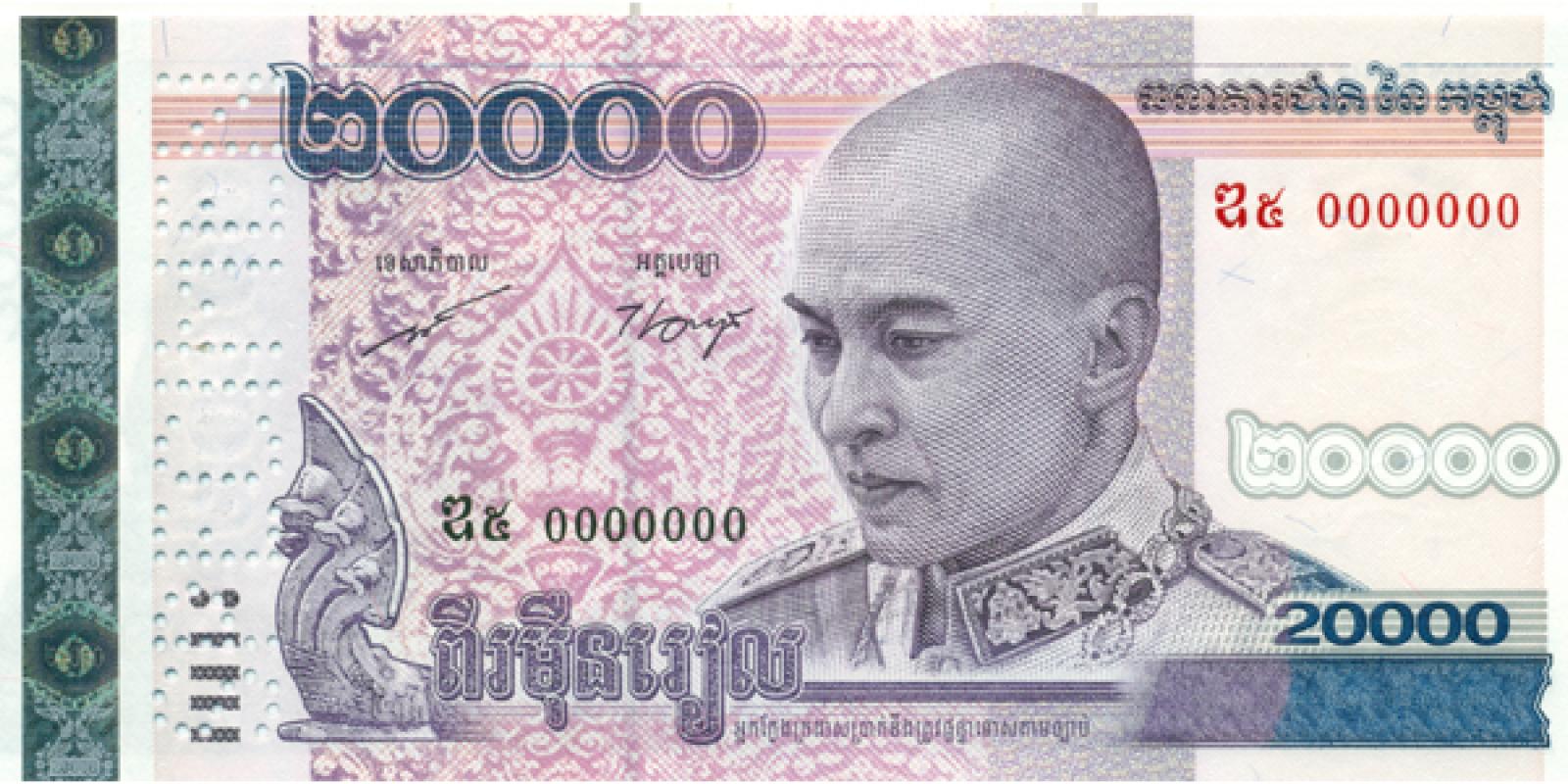The Cambodian Riel (KHR) is the country’s national currency, and it has been in use since 1980. It is represented by the symbol ៛. The Riel was in circulation in Cambodia for two distinct eras, from 1953 to 1975 and from 1980 to the present.
A Quick Outlook of Cambodian Riel
After Cambodia attained independence in 1953, the Cambodian Riel was created to replace the piastre de commerce, the French Indochina’s currency. When the Khmer Rouge took control in 1975, they abolished the Riel, with the 1975 batch of currencies made but never publicized. The communist Khmer Rouge dictatorship completely banned domestic cash flow, and the nation did not have an official currency until 1980.
Cambodia reintroduced the Riel in 1980, soon after the fall of Pol Pot’s dictatorship. That was when Cambodian currency has been fluctuating rapidly against other currencies, although it has recently lost a significant amount of its valuation in defiance of other currencies; hence, US dollars (USD) are widely accepted in exchanges. As a result, the prices of the two currencies have relatively altered over time. As of December 2020, 1 USD is more or less equivalent to 4,000 KHR.
What Currency Does Cambodia Use?
If you are new to Cambodia, you might be stunned that this country has a high degree of dollarization. The truth is you need to pay your travel visa in USD in the first place. And the good news is you won’t have to worry about acquiring Riel when you arrive in the country.

However, this is evolving as Cambodia is in the midst of a de-dollarization phase, with small USD banknotes being sorted out of the nation’s liquidity. The method of wiping away small USD banknotes began in 2020 with $1, $2, and $5 notes not widely accepted in Phnom Penh. So, the government encouraged its people to exchange their money from USD to Riel at the National Bank of Cambodia (NBC). So far, $20, $10 and even smaller notes are accepted, but you will receive the changes in Cambodian currency. For all that, numerous attractions continue to feature their business offerings in dollars until these days. However, this is expected to adjust in the next few years.
If we mention currency exchange, Cambodia is unlike other nations. Whenever you pay in USD, the exchange rate you will get is pretty fair. Indeed, if the current exchange rate from the official market rate gives 4,070 Riel per 1 dollar, you will likely receive 4,000 Riels from the street-shop rate. This seems to be a tiny variance if you don’t mind or do a smaller transaction. One more thing you need to remember as a tourist, in most cases, you will get change in Riel whether you make a transaction in dollars or Riels. So, if you need to exchange a moderate amount of money so that you have Riels on hand to spend at the local markets, you may do it at NBC or any easily-accessible and trustable exchange-rate shops such as Ly Hour.
Meanwhile, in Cambodia rural areas, people mostly transact in Riel. Actually, you can still spend your dollars, big or small notes, but expect less of a fair exchange or USD change from your spending. Therefore, be ready and carry Riels, always. The critical part is if your USDs are old-style, ripped, or otherwise shredded, they will be discarded, yet wretched Riels will remain in use.
Besides US dollars, if you go to the country border areas, like Koh Kong or Banteay Meanchey, people often accept Thai baht, whereas the Vietnamese dong is commonly used in nearby areas of the Vietnamese border. This means that three currencies can be circulated in Cambodia: the Riel, the dollar, and the Thai baht or the Vietnamese dong.
Riels in Cambodia Dollarization
Though the Riel is still extensively scaled in Cambodia currency, it primarily predominates in remote regions. This indicates Cambodia’s economy is vastly dollarized. As we can see, major business prices are more likely to be displayed in USD. In addition, USDs are extremely prevalent in cities and foreign-vibe attractions. No wonder even Cambodian visas must be paid in US dollars. On the other hand, Cambodian ATMs accept both USD and Cambodian Riel. Yet, international visitors may only withdraw money from their foreign accounts in USD.

On top of that, financial experts found that Cambodians are unwilling to utilize Cambodia Riel as a store of value, perpetuating past patterns in which only gold and jewels were more secure and acceptable forms of transaction. Although the reissued Cambodian money has been in circulation for decades, the country still struggles to keep money or utilize it for significant expenditures. Cambodians often maintain Riel exclusively for daily transactions like groceries, traveling fees, or haircuts. When local people earn more money in Cambodia, chances are they will change it into USD, gold, or jewels, which are regarded as a more secure store of value.
But regardless of all that, NBC is recently working hard on promoting and strengthening its domestic currency and financial systems via different initiatives with many private sectors. Through a business of some kind, many big malls in Cambodia start to present Khmer Riel on their commodity products. All that said, greater improvisations are anticipated to emerge in the upcoming future.
Cambodia’s Challenges To Lessen Dependency On The USD
According to H.E. Chea Chanto, Governor of the National Bank of Cambodia (Riel Effort to Help Local Currency, 2020), reducing the USD trust in the Cambodian economy is extremely challenging. To some extent, the capacity to reduce the dependency of dollarization is hampered by two major elements: psychological and policy effects.
Firstly, it has been difficult to alter Cambodians’ beliefs about switching from the US dollar to the Riel regarding psychological influence. Provided that public assurance in the Riel has diminished due to the tragic history. Also, people have been used to earning and spending US dollars for generations since the early 1990s. That is why it may take a longer time to restore its people’s confidence in the national currency.
Secondly, despite ongoing programs at the national level to promote the currency of Cambodia, they are still limited for policy consequences. As a result, there is a lack of coordination among big corporations to execute Riel initiatives at the national level at the same time. Furthermore, international investors have some opposition who have invested in USD and wish that it stays so.
References:
- Chen, J. (2020, December 22). KHR (Cambodian Riel). Investopedia. Retrieved February 23, 2022, from https://www.investopedia.com/terms/forex/k/khr-cambodian-riel.asp
- Riel effort to help local currency. (2020, April 6). Khmer Times. Retrieved February 23, 2022, from https://www.khmertimeskh.com/709853/riel-effort-to-help-local-currency/





